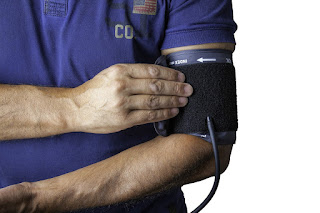Just Five Minutes of Extra Exercise Could Lower Blood Pressure, Study Finds
Adding just five more minutes of physical activity each day could slightly improve blood pressure levels, according to new research published in the journal Circulation. The findings suggest that even small increases in daily movement—like brisk walking or cycling—can have meaningful health benefits.
Study Insights on Blood Pressure and Activity Levels
The study, led by Dr. Jo Blodgett of University College London, analyzed data from nearly 15,000 individuals who wore activity monitors while having their blood pressure tracked. Activities were classified into categories such as sleep, sedentary time, slow and fast walking, standing, and vigorous exercise. Researchers examined the impact of replacing some sedentary time with other types of activity on blood pressure.
Blodgett explained that as little as five additional minutes of exercise daily was associated with slightly lower blood pressure. Increasing daily activity by 10 to 20 minutes was linked to clinically meaningful changes—defined as a 2 mmHg reduction in systolic blood pressure or a 1 mmHg reduction in diastolic blood pressure. Even small reductions in blood pressure can lower risks for heart disease and stroke.
Why Small Activity Increases Matter
Dr. Susan Cheng, a cardiology expert from Cedars-Sinai Medical Center, emphasized that the study provides strong evidence that small, daily activity changes can impact blood pressure significantly, especially as most people spend much of the day inactive. “The average middle-aged adult is sedentary for about 11 hours per day and only spends 15–16 minutes in any kind of exercise,” she noted.
Prior studies have consistently shown that physical activity is linked to healthier blood pressure. What sets this study apart is its focus on real-life behavior rather than structured exercise programs. Coauthor Dr. Mark Hamer pointed out that exercise programs can be beneficial, but once they end, participants often return to sedentary routines. In contrast, this study reflects typical activity patterns, underscoring how small adjustments could be practical and sustainable.
Gender Differences and Implications
Interestingly, the study showed that excessive sedentary time may have a slightly greater impact on blood pressure in women than in men. Cheng suggested that while the general findings apply to everyone, women might see particularly positive effects from reducing sedentary behavior and increasing activity.
The Bottom Line: A Little Extra Movement Goes a Long Way
Though observational, the study provides enough compelling evidence for medical professionals to consider recommending minor activity increases to patients for improved blood vessel health and long-term cardiovascular benefits.
“Just five more minutes of movement can make a difference,” Cheng emphasized. Whether it’s an extra walk or a bit more standing time, integrating these changes can benefit overall heart health in the long run.


